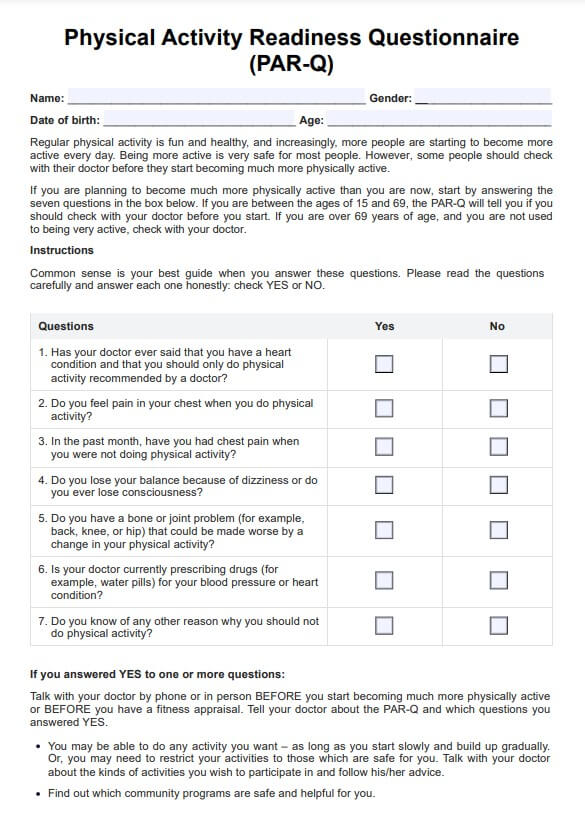The Physical Activity Readiness Questionnaire (PAR-Q) is a screening tool used to assess an individual's readiness to engage in physical activity. It consists of a series of questions that help identify potential health risks or contraindications that may require medical clearance before starting an exercise program.

Physical Activity Readiness Questionnaire (PAR-Q)
The PAR-Q is a screening tool to determine if individuals are ready for physical activity. Get a free PDF download & step-by-step guide here.
Physical Activity Readiness Questionnaire (PAR-Q) Template
Commonly asked questions
The interpretation of the PAR-Q is straightforward. If the individual answers “yes” to one or more of the questions, they are advised to consult with a healthcare professional before engaging in physical activity. This helps ensure that the individual's health status is evaluated and that any necessary precautions or modifications can be made to their exercise program.
The PAR-Q is a risk assessment tool that helps identify individuals who may be at higher risk for adverse health events during physical activity. By answering the questions, individuals can determine if they need to seek medical advice before starting or increasing their physical activity levels. This helps to minimize the risk of injury or other health complications.
EHR and practice management software
Get started for free
*No credit card required
Free
$0/usd
Unlimited clients
Telehealth
1GB of storage
Client portal text
Automated billing and online payments











